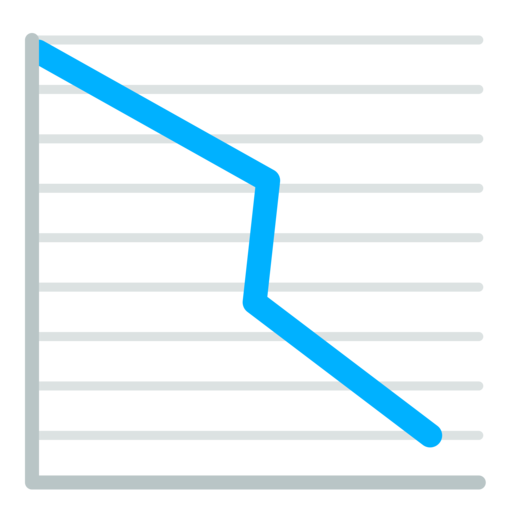It seems like everyone is talking about a recession these days. Some say yes. Others say no. Whatever happens, happens. After nearly 10 years of economic growth, it seems about time though. Either way, a recession is inevitable, it’s a part of a natural cycle. Your training needs a recession cycle too.
For high performers, you probably have the tendency to push harder and harder each and every week. You start cheating on your reps, throwing around more weight than you should, pushing through HIIT sessions well past your pain threshold. While that might work for a while, with time, things come crashing down. First, you’ll hit a peak, then a plateau, then your performance numbers will start to slide. Worst case scenario: you’ll go out of business all together.
They key to sustainable long term growth is following peak weeks and pull back weeks. (Our 12-week Accelerated Starter’s Plan integrates the Recession concept after week 8.)
What is the Recession workout plan
The programming is broken into a 4-6 week block and a 2 week block. These will be categorized as pre-recession or peak weeks and recession or pull-back weeks.
The pre-recession or peak weeks (4-6 weeks) are hard, all-out intensity. You’ll be training at max capacity. This is where you’ll make a gains and muscle profits.
The recession or pull-back weeks (2 weeks) are not easy, but they’re not hard either. If we were to put a percentage on it, let’s say about 60-75% capacity. This is where you’ll keep your muscles stimulated to make modest gains, but you’re primarily focusing on recovery.
Following the Recession workout plan is a great idea after finishing up something intense like The Size, Strength, and Shred Cycle, our 16-week training guide. Or, if you’re a beginner that’s just getting started, check out how a Recession is worked into our 12-week Accelerated Starter’s Plan.
What you’ll do on the Recession workout plan
In weeks 1-6
You’ll work out five days a week. Three are focused on strength. Two are focused on cardio and conditioning. The days you’re not working out are for mobility and active recovery. Mobility could be light yoga or dynamic stretching. Active recovery could be any activity that’s not overwhelming for your body and muscles.
Five to 10 minutes per day, either before bed, before a workout, or after a workout are dedicated to relaxation techniques. Phone-free is our preferred method for workouts and relaxation times. If you need to stay connected, we suggest you check out Endel, an app that provides “personalized sounds to help you focus and relax”.
In weeks 7-8
Everything remains relatively the same as in week’s 1-6 with the exception of how much total work you’re doing, how much resistance you’re working against, and a few exercise swaps.
How the Recession workout plan works

In weeks 1-6
Three days in the gym lifting weights isn’t a ton, but it’s not a little either. If time tends to be an issue you for you, it’s plenty of time to get results. With big lift exercises like squats, deadlifts, and presses being the cornerstones, you’ll be operating in full-blown efficiency mode. Moving around heavy weight will overpower any stress or anxiety you’re harboring.
Each week, try to get 1 more repetition than last time, or bump up the weight. And there’s no need to be greedy, even small or modest improvements are still improvements.
One of the cardio workouts includes a high-intensity circuit, the other is a lower-intensity, steady-state routine. The HIIT stuff will put your heart and lungs to work, leaving you with a natural high afterwards. The longer runs, rides, or rows will improve your endurance and will to keep going.
Each week, for your circuit, try and improve your time to completion. For your steady-state, try and add some additional time or distance.
All of the workouts should leave you feeling in better spirits afterwards. These are tough workouts for tough times. Train like a bull.
In weeks 7-8
You’ll maintain the three days in the gym with weights and two days of cardio-focused exercise. Here’s where the “recession” and the pull backs come in. The big lifts you’re doing are going to be replaced with slight variations. For example: the traditional deadlift will shift to a trap bar deadlift, the dumbbell bench press will become a neutral-grip bench press, and the overhead press will also become a neutral-grip overhead press. This gives the specific muscles you’ve been hammering for six weeks a small reprieve while activating some others. The exercises in particular are also slightly more joint-friendly.
As mentioned above, you’re going about 60-75% capacity for these two weeks. We’re not going to get hung up on exact numbers here, but let’s say if the exercise calls for 10 reps, use a weight you could get around 12 or so, but stop at 10. Use this time to concentrate very hard on moving each rep with control and efficiency.
There’s no need to try and progress in reps or weight in the second week, this is only a short-term recession.
As for the cardio days, just take your time getting through the them. In the back of your mind just think: I’m only going 60-75% here.
Bear down and take your time through these workouts. Nothing exhausting here. Enjoy this time—you’ll have another six weeks to go hard again when you cycle back around.
The Recession workout plan schedule
Monday – Full body
Tuesday – Go hard with HIIT + mobility
Wednesday – Full body
Thursday – Go the distance for endurance + mobility
Friday – Full body
Saturday – Rest up and relax, but do something active
Sunday – Rest up and relax, but do something active
The Recession workouts: weeks 1-6 (peak weeks)

MONDAY
Bird dog row 3 x 10
Traditional deadlift 5 x 10
Dumbbell bench press 4 x 10
Split squat superset with bodyweight squat 4 x 10, 4 x failure
Push-up 3 x failure
Pull-up 3 x failure
Rest 30-60s between sets
TUESDAY
Run a 5K as quickly as possible, followed by 10-15 additional minutes at a casual pace.
WEDNESDAY
Plank+dumbbell row 3 x 10
Dumbbell overhead press 5 x 10
Barbell bent-over row 4 x 10
Heavy reverse lunge superset with bodyweight jump squat 4 x 8, 4 x failure
Barbell curl 3 x 12
Dips 3 x failure
Rest 30-60s between sets
THURSDAY
Sprint intervals x30s with 20s walks
Repeat 10x
FRIDAY
Stability ball push-up 3 x 10
Barbell front or back squat 5 x 10
Single-arm dumbbell row 4 x 10
Weighted cable crunch 3 x failure
Dumbbell front raise superset with dumbbell side raise 4 x 10, 4 x 12
Push-up 3 x failure
Rest 30-60s between sets
SATURDAY
Active recovery day
SUNDAY
Active recovery day
The Recession workouts: weeks 7 -8 (pull back/recession weeks)

MONDAY
Bird dog row 3 x 10
Trap bar deadlift 4 x 10
Neutral-grip dumbbell bench press 3 x 10
Split squat superset with bodyweight squat 3 x 10, 3 x failure
Push-up 3 x 1 rep before failure
Pull-up 3 x 1 rep failure
Rest 60s+ between sets
TUESDAY
Run a 45-60 minutes at a casual pace.
WEDNESDAY
Plank+dumbbell row 3 x 10
Neutral-grip dumbbell overhead press 4 x 10
Barbell bent-over row 4 x 10
Reverse lunge superset with bodyweight jump squat 3 x 10, 3 x 1 rep before failure
Hammer curl 3 x 12
Dips 3 x 1 rep before failure
Rest 60s+ between sets
THURSDAY
Sprint intervals x20s with 30s walks
Repeat 10x
FRIDAY
Stability ball push-up 3 x 10
Dumbbell squat 4 x 10
Seated cable row or T-bar row 3 x 10
Weighted cable crunch 3 x 1 rep before failure
Dumbbell front raise superset with dumbbell side raise 3 x 10, 3 x 12
Push-up 3 x failure
Rest 60s+ between sets
SATURDAY
Active recovery day
SUNDAY
Active recovery day

